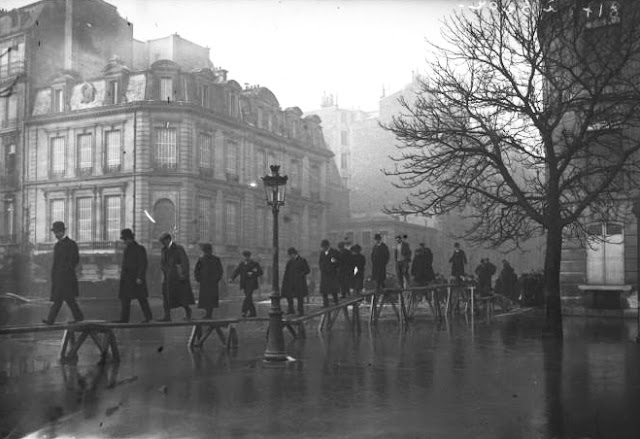Underwater
By Jessica Guirand
On 1 June 2016 the Seine River overflowed. After days of intense rainfall, the river invaded the streets to finally culminate at 6.18 metres above the normal level.
There was fear among the population, with authorities and experts stating that the record flooding level of 1910 would be reached. Back then, the Seine rose to 8.62 metres above the standard levels, paralysing the capital city for over seven weeks and causing significant damages. This time, the river rose to 6.18 metres – the same level as the last 1982 flood episode.
In 2014, the Institute of Urban Planning (Institut d’Aménagement et d’Urbanisme) directed 3D films illustrating the consequences of a major rise in the water level in flood prone areas including Paris. Coincidentally, the Institute ran a two week flood simulation in March this year for the Parisian Region (Ile-de-France) to test the emergency-flood protection plans, encourage effective collaboration between the various stakeholders and inform the population.
The stakes are high. The rise of water level has dreadful impacts but so does the decrease in flood level. In this case, it took nearly two weeks for the water to recede to normal levels. The toll includes death, population displacement, economic loss, damage to the public ream, cultural institutions, and public and private real estate.
Risk management of natural disaster is surrounded by incertitude. For example, predictions are based on previous natural events and experts concede to a lack of knowledge on underground runoff. This risk is also aggravated by the locations of major networks (electricity, water, internet, transport etc.)
7 to 8 levels below the natural ground level. Needless to say that urbanisation of flood prone areas is adding to the pressure. In this context, there’s an urgent need to make cities resilient and raise risk and prevention awareness, and particularly in urban renewal areas.
Despite the prevention measures in place, modelling and simulation, the rise in water levels that occurred earlier this month were faster than anticipated by the authorities. The lessons learnt from the simulation help to significantly reduce the impact of the flood.
On 1 June 2016 the Seine River overflowed. After days of intense rainfall, the river invaded the streets to finally culminate at 6.18 metres above the normal level.
 |
| Image source: Pierre Terdjman for The New York Times |
 |
| Image source: Wikimedia |
In 2014, the Institute of Urban Planning (Institut d’Aménagement et d’Urbanisme) directed 3D films illustrating the consequences of a major rise in the water level in flood prone areas including Paris. Coincidentally, the Institute ran a two week flood simulation in March this year for the Parisian Region (Ile-de-France) to test the emergency-flood protection plans, encourage effective collaboration between the various stakeholders and inform the population.
The stakes are high. The rise of water level has dreadful impacts but so does the decrease in flood level. In this case, it took nearly two weeks for the water to recede to normal levels. The toll includes death, population displacement, economic loss, damage to the public ream, cultural institutions, and public and private real estate.
Risk management of natural disaster is surrounded by incertitude. For example, predictions are based on previous natural events and experts concede to a lack of knowledge on underground runoff. This risk is also aggravated by the locations of major networks (electricity, water, internet, transport etc.)
7 to 8 levels below the natural ground level. Needless to say that urbanisation of flood prone areas is adding to the pressure. In this context, there’s an urgent need to make cities resilient and raise risk and prevention awareness, and particularly in urban renewal areas.
Despite the prevention measures in place, modelling and simulation, the rise in water levels that occurred earlier this month were faster than anticipated by the authorities. The lessons learnt from the simulation help to significantly reduce the impact of the flood.
 |
| Image source: Markus Schreiber/Associated Press |


BD News head line For BD Online News Lover and all time update news and show news "title".Just check this link
ReplyDeleteclick here
If you're going to obtain cbd oil for dogs or any type of CBD.More information on cbdoilformigraines click here.
ReplyDelete